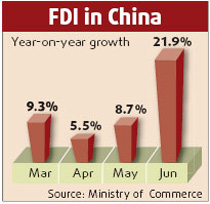Wang Ruirui
Urban dwellers in China are highly involved in cartoon activity, according to recent findings by MAP Research & Consultancy.
Based on our survey of people aged between 10 and 40 in Shanghai, Beijing, Guangzhou and Chengdu, their specific involvement can be classified as follows:
High awareness and association of cartoon characters:
Almost 80 percent of the 2,000 respondents recognized five cartoon figures on average. Their spontaneous responses to the word "cartoon" were quite emotional.
Cartoons are not just for kids as adults over 30 are passionately engaged in cartoons, which ignite their interest and excite them.
Time devoted to cartoon activities:
Approximately 37 percent of respondents watch cartoon programs on TV and 14 percent read cartoon books on a daily basis. Cartoon activity is an indispensable part of their daily lives.
The study reveals children below 12 or those in primary schools spend much more time on cartoon activities - 60 percent watch programs and 21 percent read books. But this percentage drops almost by half once they reach high school.
Cartoon product purchase commitment:
More than 90 percent of the respondents purchased cartoon-related products in the past year, often as a regular rather than a one-off purchase.
Among the various types of cartoon-related products, toys, stationery and books are the top three items.
This "entry" consumption pattern is largely attributable to the very nature of these products. For instance, toys, being a tangible representation of cartoon figures, are popular with young people for their wide distribution, perceived pragmatic utilities, inexpensive pricing, show-off value and frequent promotion lures.
Shoes, food and drinks, computer-related products and cartoon-related home furnishings, on the other hand, do not sell that well because of barriers such as safety concerns over food and drinks, lower confidence in specialized items or simply high prices.
Purchase incidence of apparel, DVD, schoolbags and accessories fall somewhere in between. Only 24 percent of the respondents had ever bought these items.
Parents are found to reward and manage children with cartoon-related products on occasions such as good semester scores, birthdays, festival celebrations or home parties.
Deep-seated motivational drivers for cartoon fever:
There's more to playing with cartoon figures than mere childish fun. Sharing the most fashionable toys with classmates strengthens the peer acceptance sense of young people; in order to de-stress from work, white-collar workers use tea breaks to play online cartoon games; professionals sometimes explore the virtual cartoon world for inspiration; parents place strong emphasis on the so-called educational value and shun "violent, evil or sexy" themes.
Girls and boys differ strongly when it comes to favorite cartoon characters. Girls are usually drawn to tender, elegant and intelligent heroes such as Cardcaptor Sakura or DORAEMON, while boys go for masculine, achievement-oriented games and fierce fighter figures such as Slam Dunk, Cyber, Formula, Four-Drive-Brother, Batman and Ultraman.
Fascination with Japanese cartoon figures:
Nationality of cartoon figures does matter a lot. Japanese cartoon figures are the most popular with Chinese. Japanese cartoons have captivating plots, exquisite painting, beautiful characters, vivid dubbing, a strong visual sense, creative ideas, dynamic pictures as well as graceful accompaniment.
Wang Ruirui is director of MAP, a Shanghai-headquartered marketing research and consultancy
(China Daily August 16, 2007)


